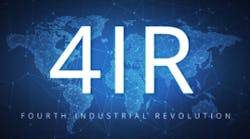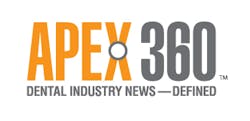The emergence of the Fourth Industrial Revolution in dentistry
Digital dentistry, Dentistry 4.0, or whatever you want to call it…it’s happening!
As we begin to shift into the Fourth Industrial Revolution, there are some basics you need to know. First of all, one must understand that the Fourth Industrial Revolution, also known asIndustry 4.0, is all about digital information translation. Industry 4.0 includes cyber-physical systems, the internet of things, cloud computing, and cognitive computing. (1) These key elements can be connected in a multitude of ways for manufacturing purposes. When connected, they make up what are know as "smart factories." These data-driven smart factories are transforming industrial production across the board.
In dentistry, Industry 4.0 translates into the digitalization of the entire dental industry. This includes electronic medical records and digital patient records for sharing. It also includes diagnostic information (3-D imaging, intraoral scans, optical scans, etc.) and treatment plan workups. The digitalization movement is being tagged as digital dentistry or Dentistry 4.0.
That said, we must understand thatDentistry 4.0 will be very different from the dental industry we have seen in the past. The information sharing of patient health records and diagnostics will provide better care for all dental treatments by allowing for customized patient delivery options with localized in-house production capabilities. Best of all, thanks to the highly automated processes and digitized workflows being employed, this new connected dental world will provide the benefits of improved oral health care at a much lower costs than patients are seeing today.
The current state of the dental industry
To be blunt, dentistry today is outright expensive. Even worse is that it is unattainable by many—regardless of insurance coverage. There are many reasons why costs are so high, but they are directly associated with the increased start-up costs of opening and operating a dental practice.
When we think about overhead, most of us think about the building, lights, chairs, etc., but one of the operational costs that is not always factored in is the cost of fabricating and delivering appliances to patients. We are not just talking about a lab bill here, but rather the cost of the dentist's time, staff time, patient time, lab time, logistics time, try-in time, refit time, more staff time, more lab time, more patient time, more dentist time...it’s just time, time, time. And we all know that time is money.
Getting to lower costs
A critical driving force for new and disruptive technologies is the discovery of business efficiencies that could not otherwise be obtained without the technologies. It should be noted that dentistry and technology go together very well. Examples include advances in dental anaesthetics (which took dental practices out of the medieval era), the improvement of preventive dentistry, and the x-ray evolution that ushered in Dentistry 3.0. Now with advances in cloud-based computing, imaging, data manipulation, and localized 3-D printing solutions at relatively low costs, the dental industry is being revolutionized at an incredible pace.
Dentistry 4.0 lowers the cost of the most complicated dental procedures by employing cutting-edge technologies locally. Using digital technology, a clinic can reduce lab costs for certain appliances by more than 70% when compared to conventional methods. One reason for this lower cost is the ability to create and implement custom dental restorations in a single visit thanks to fully digitized workflows. From data acquisition (scanning), to data manipulation (planning), to in-house dental lab production (3-D printing), to treatment delivery, everything is customized and fabricated locally in the dental version of the smart factory.
As dental smart factories become more automated, there is the potential for lower costs for patients. There is also the potential for making high quality dental treatments available to more people—regardless of geographic location.
The takeaway
Dentistry 4.0brings many advantages to a much bigger and more integrated network of providers and patients. The result is improvment to everyday life. The beginning signs of advancement we see today are only a glimpse of what’s to come.
Knowing what Industry 4.0 is and how it is transforming production, I recommend taking a deeper look at what's going on around you then ask yourself, "How can I take advantage of Industry 4.0 within dentistry?”
FURTHER READING
The next leap in dental 3-D printing: DFAB from DWS Systems [video]
Managing the true cost of digital dentistry and technology ownership in our practices
Does 'digital dentist' mean anything today?
The Third Industrial Revolution and dentistry
The future of the dental lab business is now
References
1. Industry 4.0. Wikipedia. https://en.wikipedia.org/wiki/Industry_4.0.
Editor's note: This article first appeared in the Apex360 e-newsletter. Apex360 is a DentistryIQ partner publication for dental practitioners and members of the dental industry. Its goal is to provide timely dental information and present it in meaningful context, empowering those in the dental space to make better business decisions.
Not a subscriber? Subscribe to the Apex360 e-newsletter here.
Dental news and press releases may be sent to Apex360 editors at [email protected]">[email protected].










